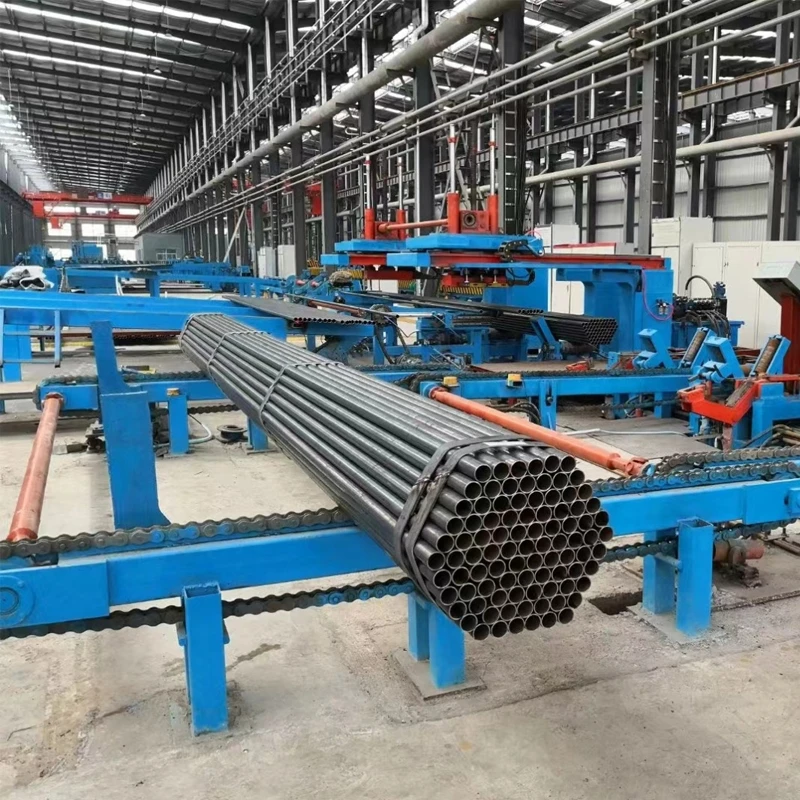Chamfering Mills for Tube End Finishing and Precision Edge Treatment
The Importance of Tube End Chamfering Mills in Modern Manufacturing
In today’s manufacturing landscape, precision and efficiency are paramount. One critical process that ensures both of these factors is chamfering, especially at the ends of tubes. Tube end chamfering mills have become essential tools in various industries, including automotive, aerospace, and construction, where high-quality standards necessitate seamless tube connections and enhanced surface finishes.
Understanding Tube End Chamfering
Chamfering is the process of creating a beveled edge on the end of a workpiece, in this case, tubes. This process serves several vital purposes it eliminates sharp edges that can cause injury during handling, makes it easier to insert tubes into connectors, and prepares the surfaces for welding or other joining techniques. A smooth, properly chamfered edge significantly increases the quality and durability of the final assembly, making chamfering a crucial step in tube processing.
The Role of Tube End Chamfering Mills
Tube end chamfering mills are specialized machines designed to automate the chamfering process. They use various cutting tools and techniques to efficiently create consistent bevels on tube ends. These mills can vary greatly in construction, from manual setups that require operator intervention to fully automated systems that integrate seamlessly into broader manufacturing workflows.
The benefits of using tube end chamfering mills are numerous
1. Precision Modern tube end chamfering mills are equipped with advanced CNC technology, enabling them to achieve high levels of accuracy. This precision is essential for ensuring compatibility between tubes and their fittings, which is particularly critical in applications where fluid transfer or structural integrity is paramount.
tube end chamfering mills

2. Efficiency Automated chamfering mills can significantly reduce the time required for tube processing. By automating the chamfering operation, manufacturers can increase output while maintaining consistent quality. In industries where high-volume production is necessary, such as automotive manufacturing, this efficiency translates directly into cost savings and faster turnaround times.
3. Versatility Most tube end chamfering mills are designed to handle a variety of tube sizes and materials. This adaptability makes them suitable for different applications, whether it’s processing steel tubes for construction or lighter materials for automotive components. Some mills even allow for the adjustment of chamfer angles, accommodating specific project requirements.
4. Safety The elimination of sharp edges through chamfering not only aids in smoother assembly but also enhances safety in the workplace. Tubes with properly chamfered ends are less likely to cause injury during manual handling or assembly processes, a factor that should never be overlooked in any manufacturing setting.
Applications in Various Industries
The applications of tube end chamfering mills span multiple sectors. In the automotive industry, they are commonly used to prepare fuel and exhaust tubes for welding, ensuring that connections are secure and leak-proof. In aerospace, where every detail matters, chamfering can contribute to the reliability of critical components, minimizing the risk of failure during flight. Similarly, in the construction sector, properly chamfered pipes can enhance the overall integrity of structures, paving the way for safer builds.
Conclusion
As industries continue to evolve, the need for high-quality manufacturing processes has never been greater. Tube end chamfering mills play a crucial role in meeting these demands, providing precision, efficiency, and safety in the chamfering process. From automotive to aerospace and beyond, their contribution is felt across the board. As technology advances, the capabilities of these machines will only improve, leading to even higher standards and more innovative applications in the world of manufacturing. By investing in tube end chamfering mills, manufacturers position themselves to thrive in an increasingly competitive market, ensuring their products meet the rigorous demands of today and tomorrow.
-
High Frequency Straight Seam Welded Pipe Production Line-BzZhou Xinghua Machinery Equipment Manufacturing Co., LTD.|line pipe steel&welded gas pipeNewsJul.30,2025
-
High Frequency Straight Seam Welded Pipe Production Line-BzZhou Xinghua Machinery Equipment Manufacturing Co., LTD.|High Precision&Automated SolutionsNewsJul.30,2025
-
High Frequency Straight Seam Welded Pipe Production Line - BzZhou Xinghua Machinery Equipment Manufacturing Co., Ltd.NewsJul.30,2025
-
High Frequency Straight Seam Welded Pipe Production Line-BzZhou Xinghua Machinery Equipment Manufacturing Co., LTD.|Precision Welding, High EfficiencyNewsJul.30,2025
-
High Frequency Straight Seam Welded Pipe Production Line|BzZhou Xinghua|Precision Welding&EfficiencyNewsJul.30,2025
-
High Frequency Straight Seam Welded Pipe Production Line - BzZhou Xinghua|Precision Engineering&EfficiencyNewsJul.30,2025


